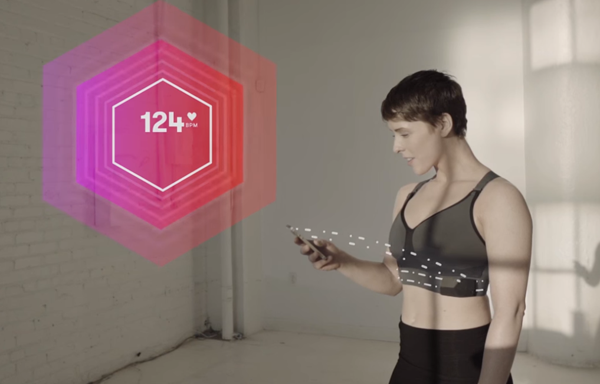When Frederic Chanay co-founded smart textiles manufacturer OmSignal with his business partner Stephane Marceau in 2011, his goal echoed the ideals of many a wearable developer – to create technology that could help improve a user’s health.
“We both had experience with elder family members going through some life events and we thought that the system of information we had to help them wasn’t good enough,” says Chanay. “We were really interested in seeing how technology, and mobile technology specifically, was going to revolutionize the world of healthcare.”

But how to go about developing the product they had in mind?
After extensively researching the types of devices that could better collect the information they wanted, Chanay and Marceau settled on clothing, which they initially thought would dominate the wearables market thanks to its convenience and ability to anchor sensors anywhere on the body.
“Now that I know how to make smart clothing, I can tell you I’m not surprised [it hasn’t become the dominant wearable],” Chanay says. “It’s incredibly complex.”
Released in 2014, the Om Smart Shirt takes advantage of conductive yarn, fabric-embedded sensors, a compression-fit design, and a “smart box” that connects to the shirt to generate performance readings that users can view on a mobile app.
Chanay admits that if he and Marceau had approached their goal solely from an engineering perspective, the shirt – and OmSignal itself – could have turned out very differently.
“When we developed the first shirts more than four years ago, we gave ourselves some parameters,” he says. “They had to be machine washable, they had to be manufacturable at scale, and they had to be reliable, meaning that you could treat them like a piece of clothing. And as I’ve learned over the last four years, clothing is really abused.”
Whatever they made also had to be attractive and comfortable, Chanay says, because he knew that users would only wear a smart shirt if it was as easy to put on as anything else in their closet – and that the social value of a stylish top is often more important than its practical ability to protect wearers from heat, rain, or snow.
Eventually, Chanay and Marceau stopped thinking solely like engineers and began taking lessons from the fashion industry, approaching their shirts as clothing first, and devices that happen to be monitoring their health second.
One of the most important elements to be ironed out, perhaps literally, was the fabric used: though Chanay admits the company’s first shirts weren’t the most comfortable, today they’re knitted from textile fibres – plus laminates, but not enough to changing the structural integrity of the clothing.
The same approach has been taken with the company’s line of sports bras, which are scheduled to be released this spring.

“I think that’s where OMSignal is maybe stronger than some of our competitors, because they all come from a tech background, and they want to find engineering solutions to their problems, whereas… we decided to embrace textiles and actually hired a lot of people from that world, so when we look at a problem we look at it from all angles,” Chanay says. “Once you look at our product from a textile perspective instead of a technology perspective, you start solving problems differently.”
There have still been engineering challenges, he says, noting that the strength of the smart shirt’s capture signals are as integral to its success as the garment itself.
“It took us awhile to get to the point where we could master the signal level that we have achieved,” Chanay says.
But he’s equally proud of his most recent assessment from the fashion world: “People from that industry have looked at the latest shirt we have, which is not on the market yet, and said, ‘that is a real shirt,'” he says.
During this year’s Printable, Flexible, Wearable Electronics Symposium (CPES2016), which will be held on April 19 and 20 at the Oakville, Ontario campus of Sheridan College, OmSignal’s smart textile director, Aldjia Begriche, will be giving a presentation on the company’s success in combining fashionable clothing, health and wellness applications, and wearable technology.
Sister publication ITBusiness.ca is a media sponsor of the event.
